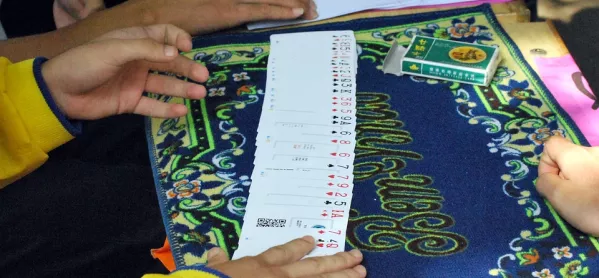- Home
- Three ways to be a better teacher - by using magic
Three ways to be a better teacher - by using magic

A magician stands in front of a crowd, and grabs their attention with a few well-chosen words: “Are you watching closely?”
Anticipation is in the air.
The magician knows that they have to keep their audience’s attention, speak at the perfect time, use the perfect words, pull off the right moves and constantly work to patch over any mistakes they might make.
Quick read: Are you accidentally upsetting your adopted students?
Quick listen: Why attachment-aware teaching matters for every child
Want to know more? Want to achieve success? Know that failure is your friend
Through a mixture of misdirection, suggestion and showmanship, the spectators leave with a sense of awe. They have witnessed the impossible.
Now go back and replace “magician” with “teacher”. Our spectators are students, but the routines we perform are as well planned and prepared as any magic trick. Just like magicians, we work to keep the attention of a crowd, and aim to have our audiences leave with the same sense of awe.
So why shouldn’t teachers study the masters of the magic craft for inspiration? I have done just that, to great effect, and have found three things particularly effective:
Misdirection
Misdirection is the act of distracting someone from something you don’t want them to see. For a magician, this can be as simple as looking at their left hand while their right hand disposes of a coin they just made ‘disappear’; our gaze follows wherever the performer is looking.
How is behaviour management any different?
I was once teaching a class and noticed a boy was desperately trying to ignore a student behind him, who was quietly winding him up. This boy was clearly getting very upset and on the verge of becoming vocal.
Instead of calling anyone out or asking someone to move, I went up and sharply asked the agitated boy: “What’s the biggest number you know?”
He considered it, then responded with “Infinity?”, to which his friend next to him responded, “What? Infinity isn’t a number!” This defused the situation, allowing me to deal with the instigator.
Why did this work? It was a misdirect. The key to this (admittedly high-risk) move was the question and confidence in asking it, making it almost a statement. Such a statement confuses your spectator, and is a handy psychological trick.
Derren Brown taught participants in one of his shows to say “My fence isn’t 12ft high!” when angrily confronted by people. It is as good as hitting restart on someone’s brain.
We can also misdirect in our teaching. Imagine a PE teacher instructing her students on rapping. Perhaps pointless, but rapping is a skill that requires dexterity, confidence, speed, practice and immaculate concentration. One may notice these are the skills used in sprinting.
If an English teacher begins a revision session by asking what Macbeth is like as a character, they may only get a few hands up. What if they begin with a misdirect, asking which celebrity would do the best job portraying Macbeth? Regardless of how many hands are up, you can guarantee all of them will be thinking about the question.
Showmanship
Teachers are often bad at showmanship. It is not about being a charismatic, all-singing, all-dancing master of happiness who creates custom handshakes with each Year 7.
Think of how David Blaine does very close-up magic: is he constantly smiling and bounding around while performing an intimate, close-up trick?
Rather, magicians like Blaine are adaptive. They know when to speak and not speak, when to move and not move. They understand that the wrong glance at the wrong time can give the whole routine away.
Teachers need to hone their skills in this area, too. In the classroom, there are times when pure charisma and charm would have made the situation 10 times worse.
Instead, you need to work out when to call on that side of your personality, and when to be passive like Blaine, or quirky like Brown. Showmanship is all about being the person the situation needs you to be for the maximum impact at that time.
Suggestion
Suggestion is the practice of guiding someone’s thoughts or actions, usually unconsciously.
When faced with choosing between two hands, we are most likely to choose the one closest to us. Similarly, magicians may nod and say “yes” when asking a question: “You’re happy with your choice of card? Yes?” This almost forces anyone to blindly agree, regardless of how they feel about their choice.
Teachers can utilise this in many ways.
Standing near a noisy student miraculously makes them quiet; nodding while speaking can make a struggling student feel better; walking with purpose near a suspicious clump of students can make them disperse without your saying a word; leaning back in a chair communicates calm, which people often copycat; calmly switching off the projector (a move often underutilised) seems to demand attention. How many times have we managed to make a student quiet down just by staring at them?
Too often, we fall back on direct instruction, demands and disruptive admonishments when all you need a lot of the time is the power of your own presence, body language and actions.
Before moving to the US, William Lismore was an English teacher. He now works with adults learning basic literacy and earning their high school diplomas
Keep reading for just £1 per month
You've reached your limit of free articles this month. Subscribe for £1 per month for three months and get:
- Unlimited access to all Tes magazine content
- Exclusive subscriber-only stories
- Award-winning email newsletters
